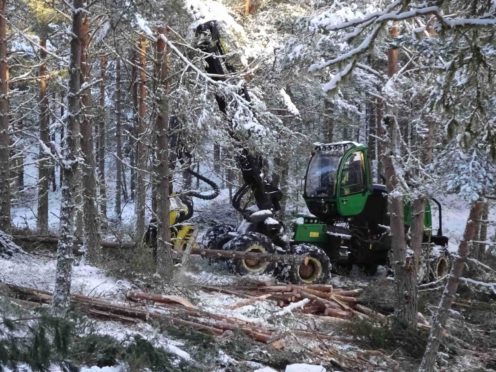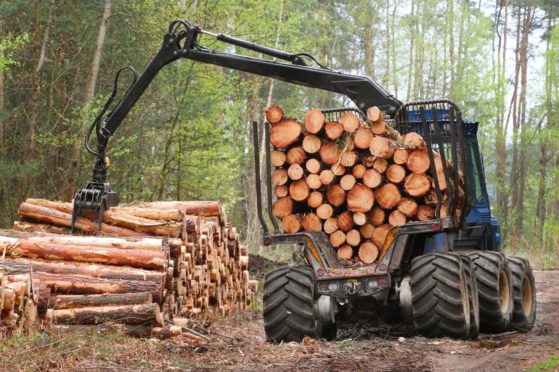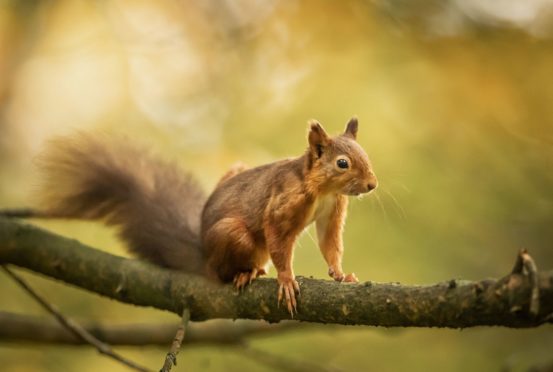The heavy snowfall this winter was a welcome lockdown distraction for many.
Families took to local slopes on sledges and snowmen popped up everywhere. It was great to see smiles on so many faces.
For the forestry and timber industry, it was not such good news. The heaviest prolonged dump of snow for a decade created serious problems, with tree planting delayed and harvested logs stuck under deep drifts rather than heading for sawmills.
This was a challenge for Seafield and Strathspey Estates, because growing and harvesting trees is an important part of our business.
At Seafield Estate, almost 30% of our 31,000 acres, stretching from Banff to Buckie and down to the north of Keith, is covered in trees. Our forestry operations work alongside both tenant farming and estate farming, the latter focused largely on malting barley for distilleries.
There’s a similar proportion of forestry at Strathspey Estate, which covers just under 57,000 acres between Aviemore and the Slochd and down towards Grantown-on-Spey. Strathspey includes significant fishing and sporting activity beside tenant farming and forestry. The forestry area includes remnants of the Caledonian Pine Forest that used to cover much of Scotland, and we plant mainly Scots pine at Strathspey.
Commercial forestry isn’t just important to the estates, but to the sawmills which provide vital rural employment in the region. We provide timber to James Jones & Sons’ and their mills at Aboyne and Mosstodloch, as well as Norbord’s board factory at Inverness. Smaller amounts go to Jones’ mill in Kirriemuir, Angus, Munros in Dingwall and biomass producers like AW Jenkinson Woodwaste near Huntly.
These businesses all offer crucial employment in rural areas. The last economic analysis, in 2015, showed Scotland’s forestry and timber industry employs more than 25,000 people and adds £1 billion in annual economic value.
With tree planting rates increasing, these figures will now be higher, yet forestry remains the forgotten f-word next to farming and fishing. All three are vital to the national, and regional, economy.
At Seafield and Strathspey, we have 39 employees working in diverse operations across forestry, farming, sporting pursuits and renewable energy. This rises significantly with seasonal workers and contractors, who we use in a number of areas, including forestry.
This past winter, it has been tough for contractors, who assist us with planting, harvesting and transporting trees. Most planting is re-stocking areas where trees have been removed, but we are also creating a small new woodland near Cullen. Planting fell behind schedule due to the heavy snow because it was impossible to get the trees into the ground.
That’s a problem because winter is our planting season. Young trees are best put into the ground when they are ‘resting’ in winter, rather than during their growth spurt during warmer months. However, the planting season is sometimes extended when the elements intervene.
The snow also made it hard to move wood out of the forest. Harvesting machines are hardy beasts and can usually get in to remove the trees, but the real problem was getting timber lorries into the forest to collect the logs – and even finding those logs when they were hidden by deep snow!
This bad weather, the worst in my view since the notorious winter of 2010-11, set us back several weeks. We had to play catch-up and that can be a challenge for forestry because of the major wildlife considerations in our work.
Capercaillie conservation is important at Strathspey and when the birds are lekking (mid-March to mid-May), we don’t work in the forest areas where they are found. We also need licences for forestry operations where we have badgers and can’t get those licences in the mating season, which stretches from December to June. When we can get a licence, contractors aren’t always available to harvest the trees.
We also have red squirrels and raptors – golden eagles, ospreys, sea eagles and goshawks – and we’re absolutely committed to their protection. They are in areas of native woodland, so are less affected by forestry operations.
However, it is a big annual challenge to plan tree planting and harvesting work around major environmental considerations. It’s not just the wildlife, but also the stringent quality controls which govern where we can plant trees in our landscape.
It’s important to remember that the trees we harvest support rural employment in both forests and wood processing sites. Across the region, our wood is being used to make timber frames for new homes, boards used to build kitchen and bathroom units, fencing, pallets (vital in transporting food and medical supplies during the pandemic) and more.
Forestry and timber operations were deemed to be a key industry during the pandemic, and we were allowed to continue working, within all the safety guidelines.
The industry worked through the pandemic, but the snow can bring us to a halt. So the next time you’re out on your sledge or building a snowman, spare a thought for those working in tough conditions in our forests to help keep supplies of wood, and our regional economy, moving.
- Will Anderson is chief executive at Seafield and Strathspey Estates.



